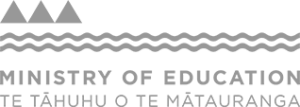CEO Update
Kia ora,
Last quarter, harmful digital communication reports returned to a number similar to what we saw in Jan-March 2021. Numbers are up from the mid-800s last quarter, to above 1,000 for this quarter. Quarters 3 and 4 are traditionally higher reporting numbers to Netsafe.
In March 2023 we re-examined our approaches to Sextortion/blackmail webcam harm types and have decided to bring a number of these matters within jurisdiction and therefore into the personal harm reporting scheme.
We are expecting Sextortion reporting to Netsafe to grow. This is off the back of New Zealand Police choosing to highlight the trend as part of their Safer Internet Day messaging https://www.police.govt.nz/news/release/safer-internet-day?nondesktop
In a first for Netsafe we’ve launched Netsafe Lab. Sean Lyons, Chief Online Safety Officer together with Drew Broadley, Chief Virtual Data Officer are leading the work of the Lab. The goal of our Lab is to become the leading entity for online safety technical, policy, data and research folks in New Zealand. Learn more about the lab.
Our focus on young people this quarter included welcoming a new cohort of our Youth Action Squad, launching our kete of materials to schools and our new interactive online learning platform for use in classrooms.
The bigger impact we have been able to make in education has come about because of a temporary uplift in funding negotiated and finalised between Netsafe and the Ministry of Education last quarter to strengthen cyber security and digital services in kura and schools.
We have also been paying close attention to trends in the incitement to commit suicide/self harm space. Together with agencies such as the Suicide Prevention Office, Mental Health Foundation, Classification Office, and Ministry of Education we have been meeting voluntarily and regularly to work on the establishment of a protocol for responding quickly when “suicide content erupts online”; development of “response materials” that can be pushed out when risky material is going viral; and establishing better working relationships with one another and across tech companies. We hope that the work of the group will be recognised and funded. It is important work and highlights the willingness of so many to create safe and positive online environments.
The other intervention we are making in the self harm space is joint research with the Classification Office into young people’s experiences and views about media content, online behaviour, and the potential impacts on body image. The request for proposal for this research is now live on GETS with a view to releasing results in Quarter 4 of 2023. The Classification Office and Netsafe have partnered on a number of initiatives over the years including our Bare Facts campaign.
Closer working relationships with Australia’s eSafety Commission has also been a focus of our efforts this quarter. One of the ways we work to improve stakeholder relationships is by co-hosting our annual trans-Tasman conference together. We bring leading online safety experts and practitioners from the region, and the wider world, together.
This year’s event, “Breaking Glass Ceilings and Building Bridges”, will be held in Christchurch on 24 and 25 October. You can sign up now to our newsletter on our website homepage to receive programme updates and presale ticket information. Our members will receive a discounted ticket rate for this conference. If you are not yet a Netsafe Member you still have time to apply. Membership is free. Contact [email protected] to enquire about Membership.
We’ve also launched some continuous improvements initiatives including:
- a short version online harm report
- a refresh of our ‘work with us’ and partner pages to make it clear to others where we are building relationships and to highlight the breadth and range of our online safety partnerships
- work with Deloitte to better understand our cost to serve model and online user experiences.
It’s an election year and that brings a focus for us on our malinformation work; information used to harm an individual. We provided the Justice Committee with our observations on the local body elections and harmful digital communications so that we might learn and prepare for what might happen in the general elections.
In April we release our research into New Zealand’s attitudes to mis/dis/malinformation, a follow up to our 2020 Your News Bulletin campaign
Delivering all the initiatives underway we have onboarded a number of new staff this quarter into new functional areas including complaint triage, continuous improvement, and event management, and are hiring for a social media and content specialist, business analysts and a number of roles in our education team.
Having attracted a mixture of public, private and philanthropic funding this past six months we are now putting those investments to work in our structure and activities to be well placed to tackle emerging online safety risks.
Ngā mihi,
Brent Carey
CEO, Netsafe
Report Contents
Previous quarterly reports
Quarterly Results
Between January – March 2023, Netsafe received 5,168 reports overall.
Top taxonomy descriptions included:
Phishing • Sextortion • Non-existant products scams • Harassment • Scams • Credit / Debit Cards • Prize promotion / sweepstakes scam • Intrusion • Sensitive information released • Non-existant services scams
TOTAL REPORTS
PERSONAL HARM COMPLAINTS
SCAM & FRAUD REPORTS
Reports by age group
2%
00-12
12%
13-17
9%
18-21
37%
22-40
29%
41-64
11%
65+
Reports by region
Reports by gender
54%
FEMALE
1%
GENDER DIVERSE
45%
MALE
Personal Harm Reporting
Reported breaches under the Harmful Digital Communications Act*
Between January and March 2023, Netsafe received 1,193 personal harm reports.
This quarter sextortion reports more than doubled in comparison to the previous quarter. Sextortion, or sometimes called revenge porn, is a form of extortion, where someone threatens to share intimate images of you if you don’t meet their demands. Usually, they are extorting you for money, but sometimes it can be for increasingly explicit images or personal information.
The scam starts by making friends online. Relatively quickly the relationship becomes intimate – albeit virtual. At some point, the scammer asks the victim to share intimate images or video. The scammer begins blackmailing the victim as soon as they receive intimate content. Most victims genuinely believe that they are in a relationship with the other party, and only realise they’ve been conned after they receive the first communication threatening to share their intimate images.
People experiencing sextortion come from all walks of life. We have young people, older people; male, female and gender diverse people; heterosexual and members of the rainbow community; accessing our service. Netsafe receives thousands of these reports every year. We try to reassure them that they aren’t alone. It can happen to anybody, at any time.
* Cases often involve breaches of more than one communication principle
Harmful Digital Communications Act Reports Spotlight
In March, a Netsafe Case Managers had the privilege of attending a Global Summit on Image Based Sexual Abuse (IBSA) in Miami. The intent of the conference was to create a global alliance of academics, lived experience experts and organisations working to prevent to prevent IBSA. This will be via improving law and policy, better tech solutions, better support for survivors and prevention strategies.
The conference was attended by around 60 people which included lived experience experts, academics, not for profit organisations, government agencies and leaders/decision makers. Attendees were particularly interested in learning about NZ’s regulatory environment and Netsafe’s role in keeping people safe online. We are unique in our approach to mediating between parties. No other countries offer this resolution option.
People impacted by IBSA shared their experiences with attendees. Many noted that the issue can be ongoing for years, as the images resurface again and again, after being removed.
Technology plays an important role in combatting IBSA. · StopNCII – https://stopncii.org/ – StopNCII.org is a free tool designed to support victims of Non-Consensual Intimate Image (NCII) abuse. The tool works by generating a hash from your intimate image(s)/video(s). Image hashing is the process of using an algorithm to assign a unique hash value to an image. Duplicate copies of the image all have the exact same hash value. For this reason, it is sometimes referred to as a ‘digital fingerprint’. StopNCII.org then shares the hash with participating companies so they can help detect and remove the images from being shared online
- Videntifier – technology that can accurately trace and identify content against any image or video, regardless of alteration. Videntifier is being used by enforcement agencies working in child sexual abuse as it minimises agents’ exposure to this material and helps to identify victims
- PIMEYES – is a facial recognition search engine to help individuals locate the content
An emerging theme of the conference was the intersection of IBSA and intimate partner violence. Often, IBSA is one of many forms of abuse going on simultaneously. Other abuse often includes harassment, stalking and doxxing. It was also recognised that vulnerable groups such as women of colour and the rainbow community are more at risk of experiencing harm from IBSA. This highlighted the importance of multi-disciplinary agencies working together to prevent IBSA.
Reported incidents from chatbot (Kora)
Education, Partnerships & Impact
Our education and outreach team delivered 49 school sessions across 25 locations with 704 attendees this quarter. 54 reports were recorded of schools accessing immediate help with incidents from our helpline team. Our team collaborated with education and community partners to deliver information sessions with organisations such as SHAKTI (ethnic minority families impacted by family violence), Idea Services (supporting young people with intellectual disabilities) and the Family Safety Team in Oamaru District Court, among others. We also collaborated with N4L and the Life Education Trust to look for ways to further support school staff and educators working on digital safety in schools.
Our education team onboarded our new cohort of Youth Action Squad (YAS) members at Google HQ in February, providing training so they can lead initiatives around the online safety issues that affect young people. Recruitment this year has seen YAS numbers grow to 13 and now involves young people from across the country.
We also launched a “kete” of materials for schools this quarter which included updated student user agreement templates, staff guidelines, digital safety management plan and responding to incidents digital guide. Our new direct-to-student online learning platform launched featuring six pilot Micro Learning Moments funded by the Ministry of Education and co-designed with teachers and learners. The micro-learns cover topics like cyber-bullying, digital footprint and body image online.
Our partnership work included hosting Safer Internet Day on 7 February. This year the microsite welcomed 1,200+ visitors, achieved 111 organisation sign-ups and the campaign achieved 14 pieces of media coverage. During the month of February, Netsafe featured adverts for our Parent Toolkit in Parent Rooms in 25 malls nationwide, from Auckland to Invercargill. In March Netsafe ran a Spotify ad campaign to reach 13-17 year olds and raise awareness of our confidential support helpline. The ads reached 98,000+ people and had 3x the usual Spotify ad click-through rate. We ran an ad campaign in all 8 university student magazines across Aotearoa, featuring 3 separate student-designed messages during the month of March including a focus on Sextortion, Harassment and Phishing. The campaign resulted in 44 harm report submissions from the 18-29 age group.
There were over 93,000 visitors to our online resources this quarter, 55,000 of them finding us via Google Search queries. Over 13,000 visits were to our “Sextortion” page, double the visitors last quarter, reflecting the continued increase in this online harm type – and reports to us – of this nature. We achieved 302 pieces of coverage in national and regional media across online, TV, radio and print news this quarter.
49 school sessions
704 staff, students and whānau reached
Submissions and Advocacy
Netsafe responds to public consultations or may otherwise advocate on issues relevant to our work. This quarter’s submissions can be found via the following links:
14 Februrary 2023 – Netsafe Submission To Justice Committee Inquiry Into Local Elections 2022
About Netsafe
Netsafe is an independent non-profit organisation with an unrelenting focus on online safety. We keep people safe online by providing free support, advice and education. Visit netsafe.org.nz for useful resources or call 0508 638 723 seven days a week for help with an online incident.
Find out more at www.netsafe.org.nz
Become a Netsafe member
Netsafe is incorporated as a society and a charity. Our members represent a variety of backgrounds and countries, but all have one thing in common – an interest in keeping people safe online. Membership is free and easy to apply for.
Find out more about being a Netsafe member, or apply to join today by completing our online form.
Report Data
The data in this report represents the data available at the end of the quarter. Information related to the reports made to Netsafe reflect high-level trends and does not include easily identifiable information about specific reports/incidents.
If you have any queries about the information in this report, please email [email protected]




